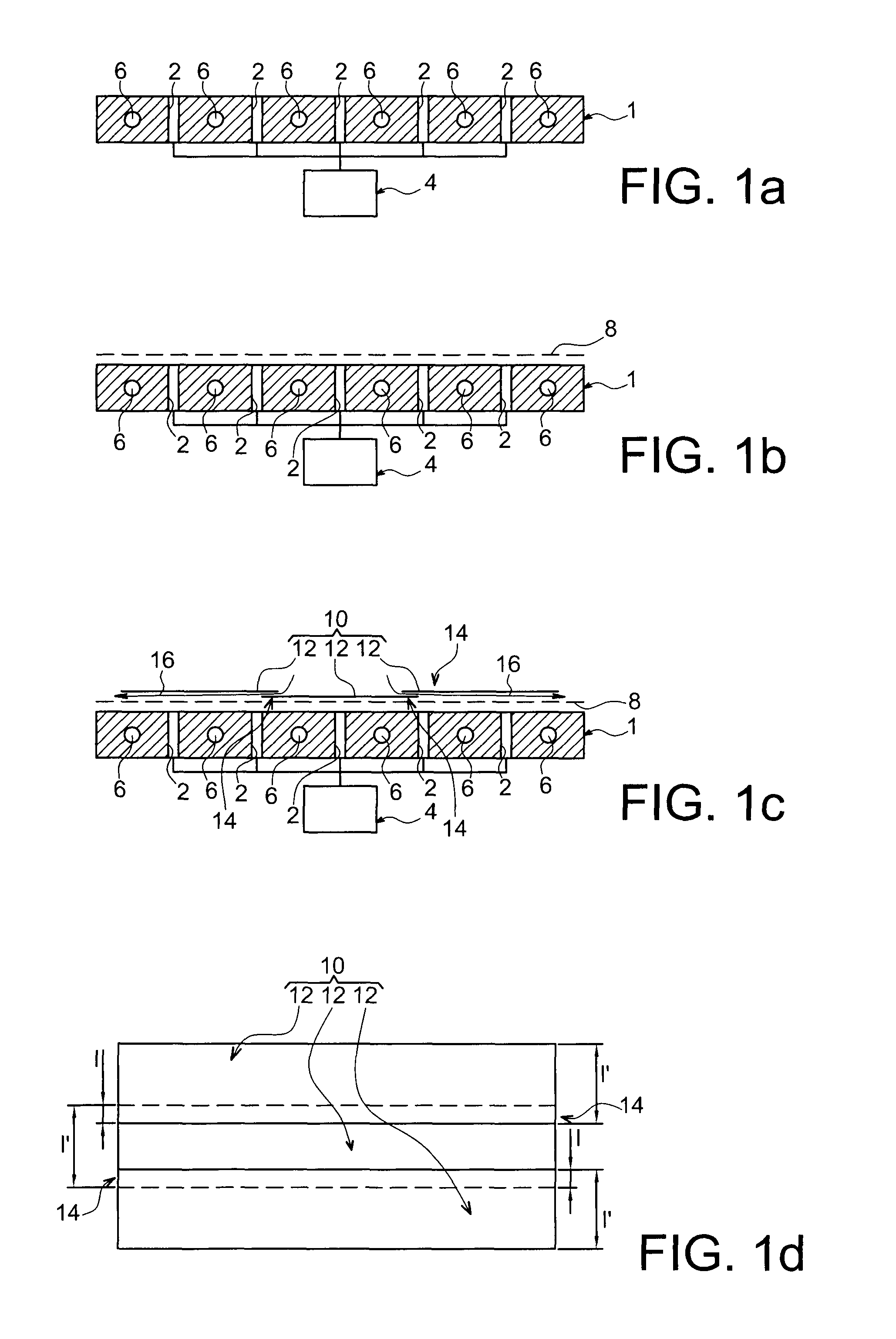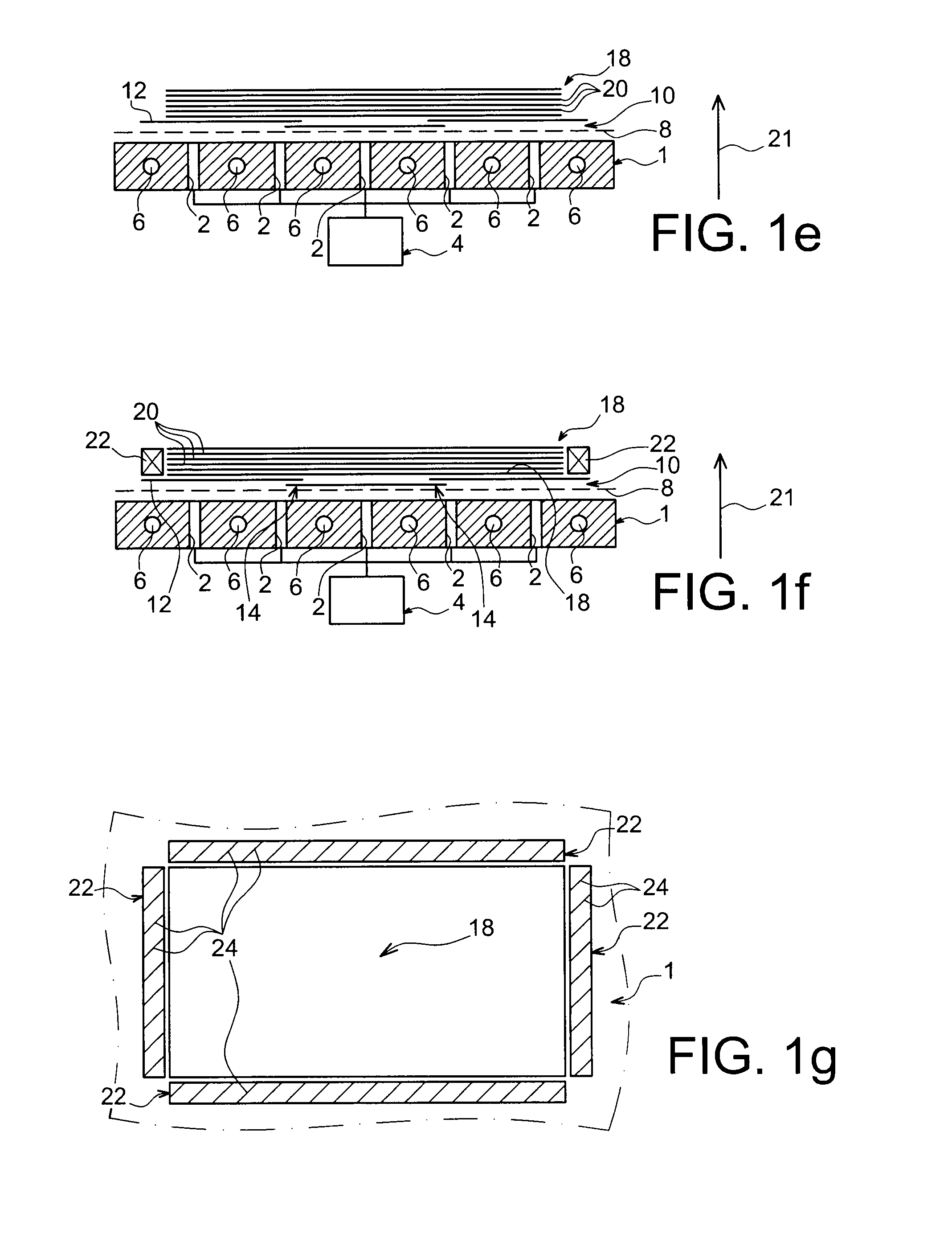Process for manufacturing a panel made of a thermoplastic composite
a composite material and manufacturing method technology, applied in the direction of chemistry apparatus and processes, other domestic articles, sustainable transportation, etc., can solve the problems of affecting the final quality of the panel obtained, preventing satisfactory air evacuation, and affecting the appearance of porosity, so as to limit the flow of transverse materials and save materials
- Summary
- Abstract
- Description
- Claims
- Application Information
AI Technical Summary
Benefits of technology
Problems solved by technology
Method used
Image
Examples
Embodiment Construction
[0042]In reference first to FIGS. 1a to 1k, one can see different successive operations performed during the implementation of a method for manufacturing a panel in a composite material, according to a first preferred embodiment of the present invention. In this first embodiment, the panel which one wishes to obtain has a substantially flat shape, and for example globally square or rectangular, and has a thickness between 1 and 20 mm. For information, it is noted that this finds a particular application in the aeronautics as field as a fuselage panel for an aircraft, including a fiber ratio close to 65%, for example.
[0043]In FIG. 1a, one can see that the tooling used for the implementation of this method first comprises a support which can be likened to a marble plate referenced 1. This plate 1 is passed through perpendicularly, relative to the plane along which it extends, by a plurality of through orifices 2 provided within this marble plate 1. As will be detailed more explicitly ...
PUM
| Property | Measurement | Unit |
|---|---|---|
| width | aaaaa | aaaaa |
| thickness | aaaaa | aaaaa |
| thickness | aaaaa | aaaaa |
Abstract
Description
Claims
Application Information
 Login to View More
Login to View More - R&D
- Intellectual Property
- Life Sciences
- Materials
- Tech Scout
- Unparalleled Data Quality
- Higher Quality Content
- 60% Fewer Hallucinations
Browse by: Latest US Patents, China's latest patents, Technical Efficacy Thesaurus, Application Domain, Technology Topic, Popular Technical Reports.
© 2025 PatSnap. All rights reserved.Legal|Privacy policy|Modern Slavery Act Transparency Statement|Sitemap|About US| Contact US: help@patsnap.com



